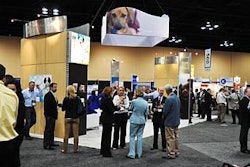The Association of American Feed Control Officials (AAFCO) recently announced an extension of its memorandum of understanding with the US Food and Drug Administration (FDA) regarding the AAFCO process for establishing feed ingredient definitions (including for petfood) through September 1, 2015. The announcement came as a bit of a surprise. The original memorandum, signed in 2007, was due to expire this year. In fact, it was only extended to September 2013 a few months ago.
Had it not been extended again, that would have meant all further review of utility and safety data for new or modified AAFCO definitions by FDA would have ceased approximately nine months from now. Because it can take an extended period, sometimes years, for a company to go through the AAFCO process for a new ingredient, proposed definitions not already in the pipeline would have had little chance to be seen to fruition.
AAFCO and FDA have worked cooperatively on establishing feed ingredient definitions for decades. FDA’s primary function has been support of the process by lending its scientific and technical expertise in evaluating safety and utility. Since 1980, FDA has used this interactive process to support recognition of AAFCO-defined feed and petfood ingredients as the “common or usual” names of ingredients as contemplated by federal law and required by FDA labeling regulations.
The problem with this cooperative activity is that although the AAFCO process is scientifically rigorous, from FDA's perspective it is based on enforcement discretion—i.e., not a formally sanctioned procedure for acceptance of new feed ingredients. Notwithstanding the fact that federal regulations (21 CFR 10.95) recognize AAFCO as a standard-setting body and allow FDA employees to engage in its activities, FDA was in recent years advised by counsel to forego further involvement with AAFCO on this matter and rather pursue “legal homes” for all allowed feed ingredients. Thus, FDA previously indicated its intent not to renew the memorandum upon its expiration.
Frankly, AAFCO would have a difficult time continuing the feed ingredient definition process without FDA’s expertise and support. This would mean companies would have to file either a GRAS (generally recognized as safe) notification or food additive petition directly with FDA for any new ingredients. There even has been talk that eventually all existing AAFCO definitions established after 1958 (the year the Food Additives Amendment was enacted) would need to be reevaluated under this new regulatory rubric.
GRAS notifications haven’t offered an answer yet. Although proposed and implemented by FDA for human food ingredients over a decade earlier, a program to accept GRAS notifications for animal feed ingredients was not put into action until 2010. From its history since then, it doesn’t seem to be a viable option for many animal feed and petfood companies or their suppliers. While the number of GRAS notifications for human food ingredients is well over 400, the current GRAS inventory for animal feed ingredients is only 14, and of those, only three (all related to production of distiller’s products) have survived the gauntlet to become the subject of a “no questions” letter from FDA.
No ingredients intended for direct use in petfoods have passed muster to date. While there may be other GRAS notifications in the pipeline, perhaps the relative paucity for pivotal safety and utility data in the public domain (e.g., peer-reviewed scientific journals) for animal feed ingredients has been a hindrance. Regardless, so far this method of regulatory acceptance does not appear to be an efficient approach for most animal feed ingredients.
Comparing AAFCO’s feed ingredient definition process with submitting a food additive petition to FDA, both have similar data submission requirements (although an AAFCO definition submission does not require an environmental assessment or categorical exclusion from that requirement). Historically, FDA determined the appropriate venue for evaluation based on potential safety concerns; those with significant safety issues required the submission of a food additive petition.
In this way, the AAFCO definition process was reserved for ingredients that did not present a major safety concern, hence the process to demonstrate safety of the ingredient was usually less cumbersome. There was discussion of providing for a “lite” food additive petition to take the place of the AAFCO definition process, but details on how that would be accomplished have not been made public to date.
For the time being, it appears that petfood manufacturers and their suppliers will have the unfettered ability to submit new or modified AAFCO feed ingredient definitions for the next several years. What will happen after that is unknown. It would behoove the petfood industry to take advantage of the opportunity while it still exists.


















